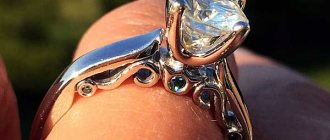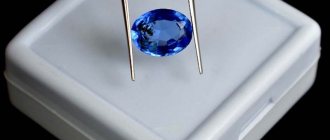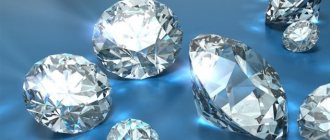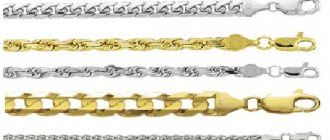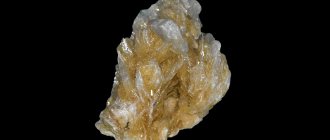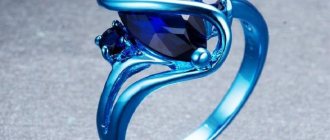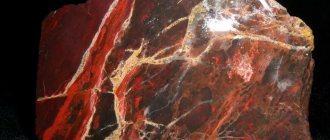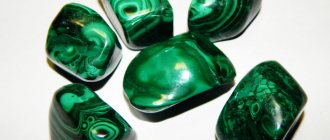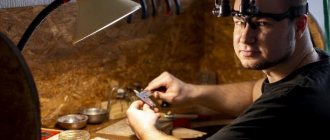Zirkaloy family
Zirconium alloys
there are solid solutions of zirconium or other metals, a common subgroup bearing the trademark
Zircaloy
. Zirconium has a very low absorption cross-section of thermal neutrons, high hardness, ductility and corrosion resistance. One of the main applications of zirconium alloys is in nuclear technology, as the lining of fuel rods in nuclear reactors, especially water reactors. The typical composition of nuclear grade zirconium alloys is greater than 95 weight percent[1] zirconium and less than 2% pot, niobium, iron, chromium, nickel and other metals that are added to improve mechanical properties and corrosion resistance.[2]
Water cooling of reactor zirconium alloys increases the requirements for their oxidation resistance. nodular corrosion. In addition, the oxidation reaction of zirconium with water releases hydrogen gas, which partially diffuses into the alloy and forms zirconium hydrides[3]. Hydrides are less dense and mechanically weaker than the alloy; their formation causes the lining to bulge and crack, a phenomenon known as hydrogen embrittlement.[4][5]
Products and properties
Commercial non-nuclear grade zirconium typically contains 1–5% hafnium, whose neutron absorption cross section is 600 times that of zirconium. Therefore, to be used in reactors, hafnium must be almost completely removed (reduced to [2][6]
Nuclear grade zirconium alloys contain more than 95% Zr, so most of their properties are similar to those of pure zirconium. zirconium. The thermal neutron absorption cross section is 0.18 barn for zirconium, which is much lower than for such common metals as iron (2.4 barn) and nickel (4.5 barn).[6] The composition and main applications of common reactor grade alloys are briefly described below. These alloys contain less than 0.3% iron and chromium and 0.1–0.14% oxygen.[7]
| Alloy | , % | , % | Seller (country) | Component | Reactor type |
| Circaloy 2 | 1.2–1.7 | – | All manufacturers | Cladding, structural elements | BWR, KANDU |
| Circaloy 4 | 1.2–1.7 | – | All manufacturers | Cladding, structural elements | BWR, PWR, KANDU |
| ZIRLO | 0.7–1 | 1 | Westinghouse | Facing | BWR, PWR |
| Zr Sponge | – | – | Japan and Russia | Facing | BWR |
| ZrSn | 0.25 | – | Westinghouse | Facing | BWR |
| Zr2.5Nb | – | 2.4–2.8 | Fabrica de Aleaciones Especiales (FAE) (Argentina) | Pressure tube | KANDU |
| E110 | – | 0.9–1.1 | Russia | Facing | VVER |
| E125 | – | 2.5 | Russia | Pressure tube | RBMK |
| E635 | 0.8–1.3 | 0.8–1 | Russia | Structural Components | VVER |
| M5 | – | 0.8–1.2 | Areva | Cladding, structural elements | PWR |
*ZIRLO means zir
conium
loy
o
xidation
.
Description of characteristics
Zirconium alloys are most actively used in such areas as fuel rod cladding, fuel channel pipes, and various fuel assembly parts. Zirconium itself is also characterized by the fact that the neutron absorption cross section is quite low. In this indicator, it is second only to substances such as magnesium and beryllium. In addition, the melting point of zirconium is very high.
Zirconium alloys, used in various industries, are characterized by the fact that they have very high corrosion resistance in water, in a steam-water mixture, in saturated and superheated steam up to a temperature of approximately 350-360 degrees Celsius. It's also worth noting that this temperature limit is expected to be raised to higher values in the near future.
Microstructure
Scanning electron micrograph showing the microstructure of zircaloy-4.
At temperatures below 1100 K, zirconium alloys belong to the hexagonal crystal family (HCP). Its microstructure, revealed by chemical attack, shows needle-like grains, a typical Widmanstätten pattern. When annealed below the phase transition temperature (from α-Zr to β-Zr), the grains are equiaxed with sizes ranging from 3 to 5 μm.[8][9].
Oxidation of zirconium alloy
Zirconium alloys easily react with oxygen, forming a nanometer passivation layer[11]. The corrosion resistance of alloys can be significantly degraded when certain impurities (such as more than 40 ppm carbon or more than 300 ppm nitrogen) are present.[12] The corrosion resistance of zirconium alloys is enhanced by the deliberate application of a thicker, glossy black passivating layer. zirconium oxide. Nitride coatings can also be used.
While there is no consensus on whether zirconium and zirconium alloys have the same oxidation rate, zircaloids 2 and 4 behave very similarly in this regard. Oxidation occurs at the same rate in air or water and occurs under ambient or high vacuum conditions. A thin submicrometer layer of zirconium dioxide quickly forms on the surface and stops further diffusion of oxygen into the bulk and subsequent oxidation. The dependence of the oxidation rate R on temperature and pressure can be expressed as[13]
R = 13.9 P1/6 Exp (−1.47 / kW)
The oxidation rate R here is expressed in grams / (cm2 second); P - pressure in the atmosphere, that is, the multiplier P1/6 = 1 at atmospheric pressure; c activation energy is 1.47; kB is Boltzmann's Constant (8.617×10−5 eV/K) and T is the absolute temperature in Kelvin.
Thus, the oxidation state of R is 10−20 g per 1 m2 area per second at 0 °C, 6×10−8 g m−2 s−1 at 300 °C, 5.4 mg m−2 s−1 at 700 °C and 300 mg m−2 s−1 at 1000 °C. Since there is no clear threshold for oxidation, it becomes noticeable on a macroscopic scale at temperatures of several hundred °C.
Alloy parameters
The properties of zirconium alloys in terms of mechanical stability are quite high, which cannot be said about pure zirconium. It is alloying that achieves high strength of the material. For example, an alloy such as niobium (Nb) and 1% zirconium (Zr) will be characterized by the fact that the yield strength of the material at temperatures of 20, 200, 300 and 400 degrees Celsius will be equal to 200, 160, 120 and 90 MPa. This alloy is actively used for fuel cladding. And, for example, if you change the composition of a zirconium alloy with niobium, that is, increase the zirconium content to 2.5%, then the yield strength will increase to 280, 220, 200 and 180 MPa, at the same temperatures.
However, such materials also have their drawbacks. The disadvantages include the fact that the alloy with zirconium turns out to be too creeping when the temperature reaches 320-350 degrees Celsius and above. Another disadvantage is that Zr actively dissolves hydrogen, which often occurs during the corrosion process. Because of this, substances such as zirconium hydrides will be formed, which greatly reduce the ductility of the raw material, which makes the metal more brittle.
Steam oxidation of zirconium
One of the disadvantages of zirconium metal is that in the event of a loss of coolant accident in a nuclear reactor, the zirconium cladding quickly reacts with water vapor at high temperatures. The oxidation of zirconium with water is accompanied by the release of hydrogen gas. This oxidation is accelerated at high temperatures, such as inside a reactor core, if the fuel assemblies are no longer completely covered by liquid water and are not sufficiently cooled.[14] Zirconium metal is then oxidized by protons from water to form hydrogen gas by the following redox reaction:
Zr + 2 H2O → ZrO2 + 2 hours2
Zirconium cladding in the presence of D2O deuterium oxide is often used as a moderator and coolant in the next generation of pressurized heavy water reactors which CANDU The use of designed nuclear reactors will express the same oxidation when exposed to deuterium oxide steam as follows:
Zr + 2 D2O → ZrO2 + 2 D2
This exothermic reaction, although only occurring at high temperatures, is similar to the reaction of alkali metals (such as sodium or potassium) with water. It is also very similar to the anaerobic oxidation of iron by water (the high temperature reaction used by Antoine Lavoisier to produce hydrogen for his experiments).
This reaction caused a small hydrogen explosion, which was first observed in the Three Mile Island reactor building in 1979, but did not damage the containment building. The same reaction occurred in boiling water reactors 1, 2 and 3 of the Fukushima Daiichi Nuclear Power Plant (Japan) after reactor cooling was interrupted by the related earthquake and tsunami events during the March 11, 2011 disaster that led to the Fukushima nuclear disaster -daiichi. Hydrogen gas was released into the reactor maintenance rooms, resulting in an explosive mixture of hydrogen and air. oxygen exploded. The explosions severely damaged external buildings and at least one containment building.[15] A reaction also occurred during the Chernobyl accident when steam from the reactor began to escape.[16] Many water-cooled reactor containment buildings have catalyst recombiner units installed to rapidly convert hydrogen and oxygen into water at room temperature until the explosive limit is reached.
Zirconium in medicine
Zirconium alloys are used quite actively in medicine. Scientists have found through experiments that even wearing simple zirconium bracelets can help in the treatment of certain diseases, and this can also improve a person’s overall level of well-being.
Today, implants (fixators) are quite often used in such areas of medicine as traumatology and maxillofacial surgery. Fixators are used for fractures, fixing the bones so that they do not move. It is in these cases that one can highlight such advantages of using zirconium alloys as: high biological compatibility (meaning the absence of allergic reactions of the human body to such an alloy or rejection), high strength characteristics of the alloy, which is very important for fixatives. It is also worth noting that the absence of rejection or allergy to such a substance meant that there was no need to repeat surgery to remove the fixative if the body suddenly began to reject the implant.
Hydride formation and hydrogen embrittlement
Bright field transmission electron microscopy (BF-TEM) micrograph of zirconium hydride in the microstructure of zircaloy-4.
In addition, 5–20% hydrogen diffuses into the zirconium alloy shell to form zirconium hydrides.[17] The hydrogen production process also mechanically weakens the shell of the rods, since hydrides have lower ductility and density than zirconium or its alloys, and therefore blisters and cracks form when hydrogen accumulates.[4] This process is also known as hydrogen brittleness. It has been reported that the concentration of hydrogen in hydrides also depends on the site of nucleation of the precipitates.[18][19]
In the event of a loss of coolant accident (LOCA) in a damaged nuclear reactor, hydrogen embrittlement accelerates the destruction of the zirconium alloy cladding of the fuel rods when exposed to high temperature steam.[20]
General information
Zirconium (Zr) is an element of the periodic table whose atomic number is 40 and its atomic weight is 91.22. In normal condition and under normal conditions, this material is a shiny metal with a silvery-white tint. The density of such raw materials reaches 6.45 g/cm3. This metal in its pure form, containing no impurities, is distinguished by the fact that it has very high ductility and is very easy to process, both cold and hot. It is worth noting here that this raw material, like titanium, for example, will sharply lose its mechanical properties if it is combined with impurities of non-metallic substances. The worst combination is zirconium and oxygen.
Applications
The Russian glass is made of zirconium alloy.
Zirconium alloys are corrosion resistant and biocompatible, and can therefore be used for body implants.[6] In one particular application, a Zr-2.5Nb alloy is molded into a knee or hip implant and then oxidized to produce a hard ceramic surface for use as a support for the polyethylene component. This zirconium oxide alloy material provides the beneficial surface properties of ceramics (reduced friction and increased abrasion resistance) while maintaining the beneficial bulk properties of the base metal (manufacturability, fracture toughness, and ductility), providing a good solution for these medical implant applications.
Declining demand for zirconium in Russia due to nuclear demilitarization after the end of the Cold War led to the exotic production of zirconium household items, such as the vodka shot glass shown in the picture.
Material and alloy properties
Zirconium itself stands out because it has a fairly high resistance to various acids. This raw material does not dissolve in environments such as nitric and hydrochloric acid or alkalis. This characteristic is key. Based on it, many zirconium alloys are created. For example, if you take multicomponent magnesium alloys and add an element such as zirconium to them, the material will become much more resistant to corrosion. If you create an alloy of titanium and zirconium, the acid resistance of the first element will increase.
It is also worth noting that all zirconium alloys with other metals are characterized by the fact that they do not lose their viscosity over a wide temperature range; resistance to mechanical impact loads remains at a very high level. An example can be given of an alloy of magnesium with a few percent of zinc and only a few tenths of a percent of zirconium. The resulting metal will be almost twice as strong as simple magnesium, and it will also be able to maintain its strength at temperatures up to 200 degrees Celsius.
Recommendations
- The constituents of alloys are usually measured by mass.
- ^ a b
Mary Eagleson (1994).
Concise Encyclopedia of Chemistry
. Walter de Gruyter. pp. 1199–. ISBN 978-3-11-011451-5. Retrieved March 18, 2011. - Carpenter, G. J. C.; Watters, J. F. (1978). "In situ study of the dissolution of γ-zirconium hydride in zirconium." Journal of Nuclear Materials
.
73
(2): 190–197. Bibcode:1978JNuM … 73..190C. Doi:10.1016/0022-3115(78)90559-7. - ^ a b
Delayed hydride cracking of zirconium alloys in tubular nuclear reactors, Final Report of the 1998–2002 Coordinated Research Project, IAEA, October 2004. - Nuclear Fuel Fabrication Archived July 26, 2011 Wayback Machine, Fuel Fabrication Archived July 26, 2011 Wayback Machine World Nuclear Association, March 2010
- ^ a b c
George S. Brady;
Henry R. Clauser; John A. Vaccari (July 24, 2002). Handbook of Materials
(15th ed.). McGraw-Hill Professional. pp. 1063–. ISBN 978-0-07-136076-0. Retrieved March 18, 2011. - Peter Rudling; Alfred Strasser; Friedrich Garzarolli (2007). Welding zirconium alloys
(PDF). Sweden: Advanced Nuclear Technology International. - Melodies, M. A.; Harrison, R.W.; Greaves, G.; Hinks, J. A.; Donnelly, S. E. (September 2021). “Effect of He implantation on the microstructure of Zircaloy-4 studied by in situ TEM” (PDF). Journal of Nuclear Materials
.
Elsevier. 493
: 230–238. Bibcode:2017JNuM..493..230T. Doi:10.1016/j.jnucmat.2017.06.012. - Pshenichnikov, Anton; Stuckert, Yuri; Walter, Mario (2015-03-01). "Microstructure and mechanical properties of Zircaloy-4 cladding hydrogenated at temperatures representative of loss of coolant accident (LOCA) conditions." Nuclear Engineering and Design
.
SI: NENE 2013. 283
: 33–39. Doi:10.1016/j.nucengdes.2014.06.022. - ^ a b
"Light Water Reactor Sustainability Program Development of an Advanced LWR Nuclear Fuel Cladding System: Program Technical Plan" (PDF). - Atomic probe analysis of zircaloy
(PDF) - Corrosion of Zircaloy spent fuel cladding in storage National Research Council, July 1989.
- Rion A. Causey, Don F. Cowgill and Bob H. Nielson (2005) Review of oxidation rates of zirconium alloys, Department of Engineering Materials and Department of Nanoscale Science and Technology, Sandia National Laboratories
- Luke Gillon (1979). Le nucléaire en question, Gembloux Duculot, French edition, 240 pp.
- Japanese engineers work to repair damage to nuclear reactor, Los Angeles Times, March 14, 2011.
- Chernobyl Accident Appendix 1: Sequence of Events, World Nuclear Association, November 2009.
- DOE-HDBK-1017/2-93, January 1993, Department of Energy Fundamentals Handbook, Materials Science, Volume 2 of 2, US Department of Energy, January 2003, pp. 12, 24.
- Melodies, Matheus A.; Silva, Chinthaka M.; Edmondson, Philip D. (January 2021). "Dependences of hydrogen concentration in zirconium hydrides for specific sites." Scripta materialia
.
158
: 136–140. Doi:10.1016/j.scriptamat.2018.08.044. ISSN 1359-6462. OSTI 1481703. - Motta, Arthur T.; Capolungo, Laurent; Chen, Long-Qing; Cinbiz, Mahmut Nedim; Diamond, Mark R.; Koss, Donald A.; Lacroix, Evrard; Pastore, Giovanni; Simon, Pierre-Clément A.; Tonks, Michael R.; Wirth, Brian D.; Zikri, Mohammed A. (2019). "Hydrogen in zirconium alloys: a review". Journal of Nuclear Materials
.
518
:440–460. Doi:10.1016/j.jnucmat.2019.02.042. ISSN 0022-3115. - Behavior of nuclear fuel under loss of coolant accident (LOCA) conditions. Status report. OECD 2009, NEA No. 6846. https://www.oecd-nea.org/nsd/reports/2009/nea6846_LOCA.pdf
